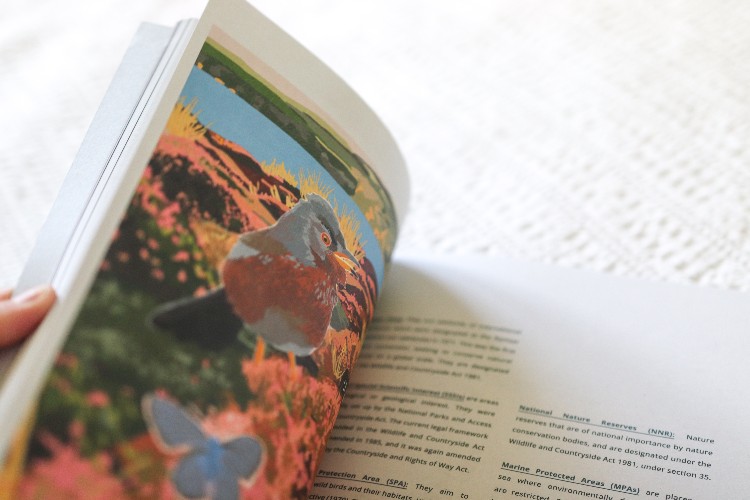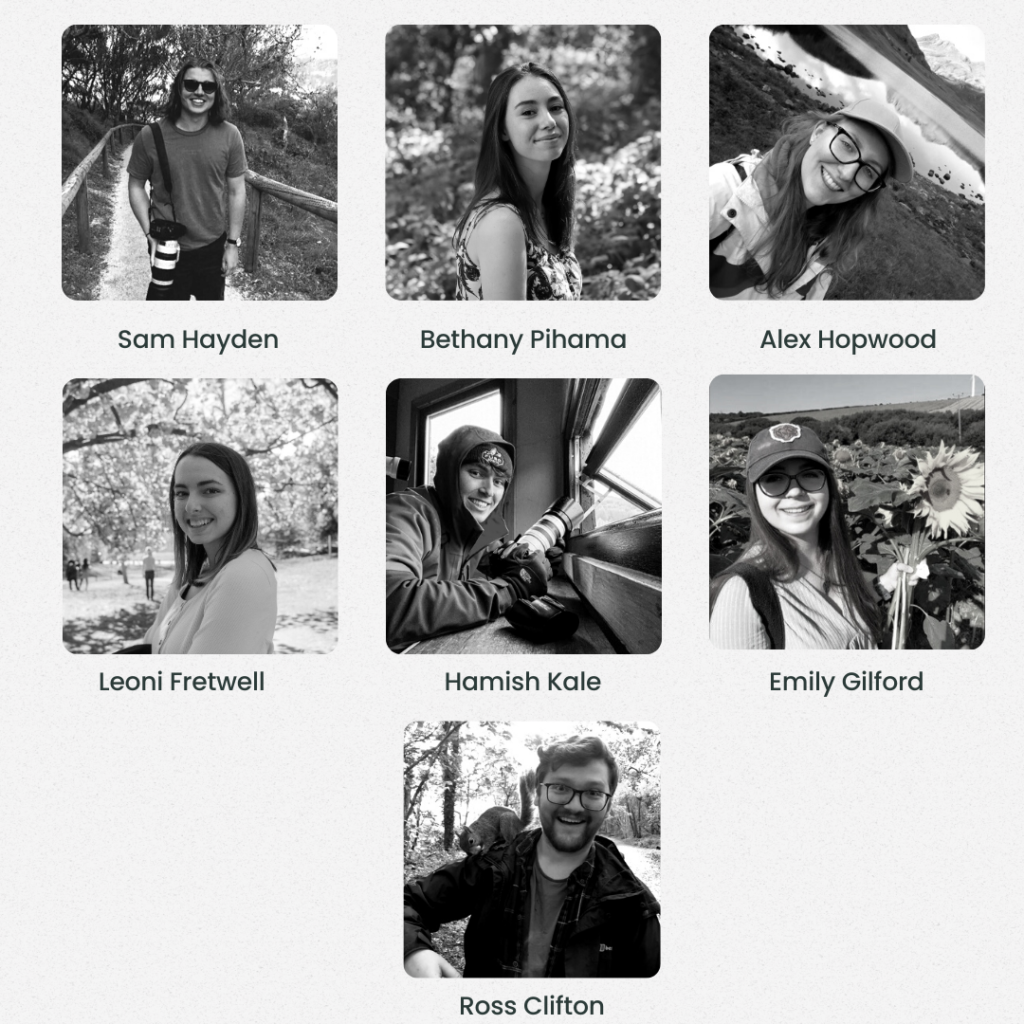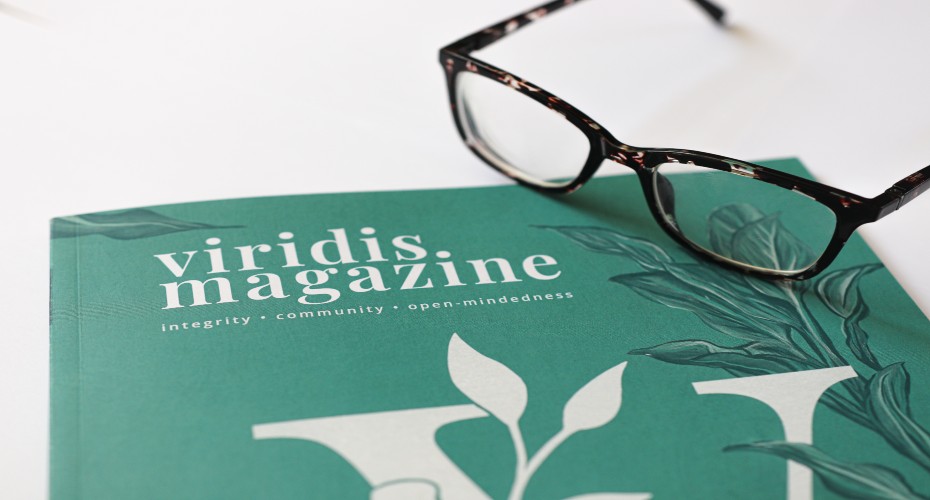This year several University of Exeter alumni came together – alongside other colleagues – to start Viridis Magazine, with a focus on intersectional environmentalism and solution-based journalism. We spoke to some of the team members behind the magazine including alumna Bethany Pihama (Conservation Biology and Ecology, 2019) to find out more about how the magazine came about and what the process is like producing each edition.
The motivation behind the magazine was a dream to revolutionise how people consume news stories – specifically environmental news – moving away from doom and gloom as well as the monotony of most mainstream media outlets. This vision started out as Bloom in Doom Magazine in 2019, under Falmouth University alum Adam Heywood who has since decided to return to academia. The rest of the team decided to carry on and, out of respect to Adam and his legacy, chose a new name for the magazine.
As a result, in 2023, the team started Viridis Magazine, with a focus on intersectional environmentalism and solution-based journalism. Viridis can be translated as the colour green in Latin but has other connotations, including youthful, fresh, blooming and new life. The team felt that it was a perfect fit with their ethos of spreading stories of hope and focussing on the solutions, bringing life and new voices into the environmental sector. They wanted to “create a media platform that would spread hope wherever you may be, moving towards positive stories of tangible climate action to inspire and help tackle the plight of eco-anxiety that we have faced ourselves.”
The team involved in Viridis is made up of: Sam Hayden (Head of Operations and Editor), alumna Bethany Pihama (Head of Social Media), alumna Emily Gilford (Head of Editorial), alumnus Ross Clifton (Editor), Alex Hopwood (Head of Design), alumna Leoni Fretwell (Head of Art) and Hamish Kale (Social Media Executive). *
All of the team members come from a variety of academic backgrounds, which continues to provide different perspectives, and has been beneficial in intertwining both science and the arts into the magazine. Several of the team studied at our Penryn Campus, which is shared with Falmouth University, and provided a place where creativity and science meet in the middle. When reflecting on the team composition, Bethany says: “There are so many ways in which to save nature, and no matter what discipline your degree is in there is a part you can play. This is the feeling which joined us all together, to tackle our growing need to do more.”

So far, two volumes of Viridis have been produced with a quarterly publication schedule meaning two further editions planned for autumn and winter this year. For each edition, the team always starts with a creative brainstorm, deciding the theme of the issue and going from there. The key questions they always lay out at the start are: what is important (and relevant) to write about, what do they want to inspire their readers with, and how can they best tell these stories in a way that makes readers feel hopeful for the future? After they’ve come up with a list of prompts, they put out a call for writers, illustrators, and remain open to new pitches.
After they have gathered all the content, their creative team starts the editorial design process of – firstly – briefing artists to create accompanying visuals and cover artwork, and – secondly – collating these articles and artworks into A4 magazine format. At the end of all that, voilà! As they are an environmental magazine, they are also always striving to make sure that they are as responsible as possible during production. They print on demand which is a great way to minimise any waste, as well as use eco-friendly inks and print only on FSC certified recycled paper. Reflecting on the process Sam Hayden, Head of Operations and Editor, says: “There are so many elements which go into creating a magazine but the end result is something which we are incredibly proud of every time.”
The team behind Viridis can also relate to the growing feeling of eco-anxiety that comes from the current and younger generations growing up in a world where we are hyper-aware of environmental challenges and the need to tackle the climate emergency. We asked the team what personally gives them all hope when faced with this challenge and they said: “Learning about the amazing work which is already underway tackling these issues always gives us hope. We have so many of the solutions already, but often these stories get buried under the negativity in the sector. That’s not to say that we have our heads in the sand – we realise that many of these ‘solutions’ aren’t perfect. However, we recognise that, discuss the issues, and examine how we could potentially fix these going forward in the future.”
One of the aims of Viridis magazine was to provide this hope to its readers alongside educating them on key issues and the key message they would like readers to take away is that there is still hope!
“There are huge strides we need to make in the coming years, but we do have the solutions – now it is just a matter of putting it into action. Everyone can play their part, from individuals to communities to businesses. Sustainability can be incorporated into all aspects of society, whether you are in the finance sector, the arts, agriculture, conservation or more.”
– Sam Hayden, Editor and Head of Operations at Viridis Magazine
In terms of the future for Viridis magazine, the team has many big plans! They are still settling into being a business, so the team are currently volunteers as are their contributors. However, as graduates, they know how difficult it can be to get your ‘foot in the door’ after university, and they will continue to be an open platform for new voices. The team collaborate with lots of students from different universities and especially welcome new writers/artists to give them a chance to be published in a magazine without prior experience. Bethany says: “We are proud to say that this exposure has aided some of our contributors in getting job offers in the past, from the experience they have gained from being involved with the magazine. So far, the reception has been wonderful and we wish to continue to grow our audience, including through online readership, as well as continue to platform different voices. Watch this space – Viridis Magazine has a lot more to come!”
You can learn more about Viridis and keep in touch with them via their website.
If you would like to contribute to the magazine, you can join their Facebook writers group where they welcome new voices. If you are an artist interested in contributing an illustration, please email viridismag@gmail.com to discuss with their design team.
*Viridis Team members

- Sam Hayden (Head of Operations and Editor): BA Marine and Natural History Photography (Falmouth University) and MSc International Relations (University of Bristol)
- Bethany Pihama (Head of Social Media): BSc Conservation Biology and Ecology (University of Exeter, 2019)
- Emily Gilford (Head of Editorial): BSc Zoology and MSc Evolutionary Ecology (University of Exeter, 2019 and 2020)
- Ross Clifton (Editor): BSc Conservation Biology and Ecology and MSc Conservation and Biodiversity (University of Exeter, 2019 and 2020)
- Alex Hopwood (Head of Design): BA (Hons) Graphic Design (Arts University Bournemouth, 2019)
- Leoni Fretwell (Head of Art): BA English (University of Exeter, 2021)
- Hamish Kale (Social Media Executive): BA Marine and Natural History Photography (Falmouth University)

